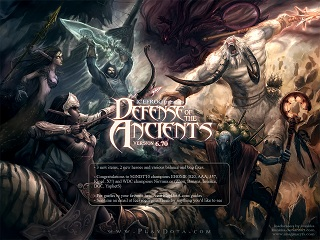 |
| Morning Dew |
Have you ever woken up bright and
early in the morning, your legs step on the wet grass as the wetness seeps in
through the sole of your feet? Morning dew, that’s what it’s called. Now I know
you all know what morning dew is, but have you ever wondered why it only
appears in the morning? Well, we only see dew in the morning because for dew to
form, air must be cooled to its condensation point; there must be little
movement to the air. These conditions usually occur overnight when the wind
dies down and the air becomes still.(I’m not that smart; Wikipedia came through
with that definition, but let’s just stick to the part where you’re impressed
by my smartness shall we?)
This year has been one of those years that have just been morbid
for me. I’ve joined more Rest in Peace pages on Facebook than I have gotten
friend requests. Death is one of those enemies that comes and steals something
so precious to you. That’s where morning dew comes in, I’ve come to realize
life is like morning dew, just like morning dew comes in the morning and gone
during the day, that’s just how short and precious life is. We never know when
our morning dew will fade, and this got me thinking, as corny as it sounds;
life is short. Sometimes we tend to live our lives as if we are immortal, the
all lets live for today for we don’t know what tomorrow brings kind of life.
But with all the friends I’ve lost this year, one thing I’ve come to realize
what it really means to live life to the full. It’s not about partying,
drinking to the max like there’s no tomorrow. It’s making the best of the time
we have now, because like morning dew, we never know when we’ll fade away.
Making an impact in your life. A wise woman once told me, if you want to know
just how much impact one made in their lives or those around them, everyone
always wants to chip in on their eulogy at funerals. And no I’m not talking
about MPigs who use funerals as their platform to beg for votes and for some
silly attention seeking airtime. I’m talking about the close family, friends
and those who mattered to the deceased.
Lately it’s been heart-wrenching watching news. I’m one of those
people who are very empathetic. I would cry just by hearing a friend of a
friend lost their loved one. It’s because when you lose someone close, a family
member or a loved one you know the pain one goes through and you kind of feel
their pain. The ferry tragedy in Zanzibar that took so many lives, those are
people who had plans; they were looking forward to seeing another day not for
it to end so abruptly. The Sinai Fire tragedy this week, it pained me when some
friends of mine were talking so coldly about it. Not all who perished in the
fire were out there siphoning fuel. Some were kids going to school, some were
still at home waiting for the rain to die down but due to bad timing they were
caught up in it. For a fellow human being to say I hope they learned their
lesson, is just sadistic. There’s a Ghanaian Proverb that came to mind when I
heard all the idiotic conversations about this all: It is a fool who rejoices
when his neighbor is in trouble. Think about the child who will grow up without
a father or mother because the dad was trying to make a quick buck maybe to
provide for the family. Them being rained on, homeless, everything lost because
they were caught up in man-made disasters. Now we can go on and on about who to
blame and what not, but enough about that.
Sometimes I always wonder if I had a flash forward of my life
knowing when it will end, would I do things differently. Would I be a better
person as it were? But the beauty about life, it’s a mystery. We never know
when our morning dew will fade away that’s why we need to live life without
regrets, make amends, forgive and let go and try to make everyday count. As I
write this post, I can’t help but shed a tear or two, I just lost another
friend, we might not have been close this past few years but what pains me is
the newborn baby she left. The child that will live without her mummy, the child
that will not suckle on its mama’s breast but feed on formulas and powdered
milk. The child that will not feel its mothers touch, her warmth and her
protective arms, and it just makes me cry and pray for that child and the
family. Life is short beautiful ones, just like morning dew it comes and fades
away.
Now this is one poem I wrote when I lost my dad, and thought I’d
share it with anyone who’s lost a parent, a friend or anyone who mattered to
them. Promise not to be so morbid and sad on the next blog post, but writing it
out has helped me much. Take care of you.






















.jpg)








